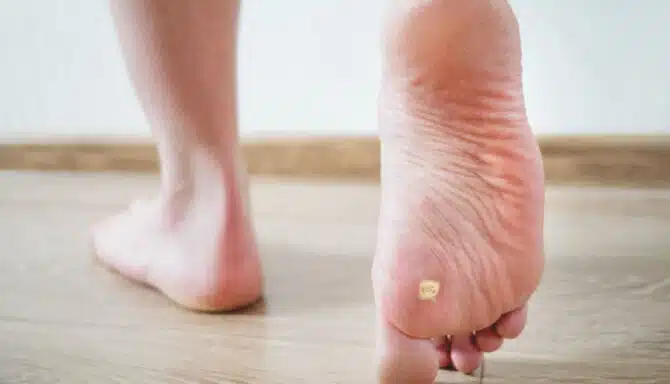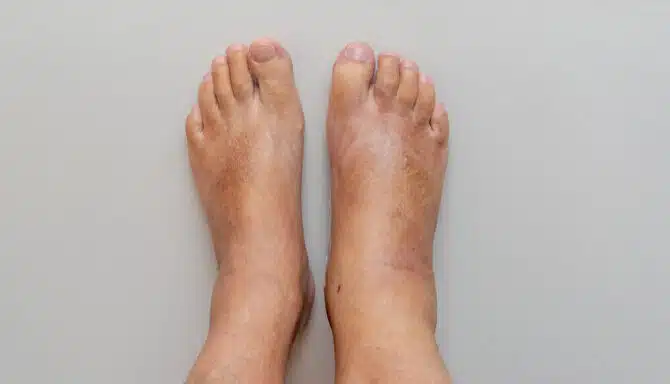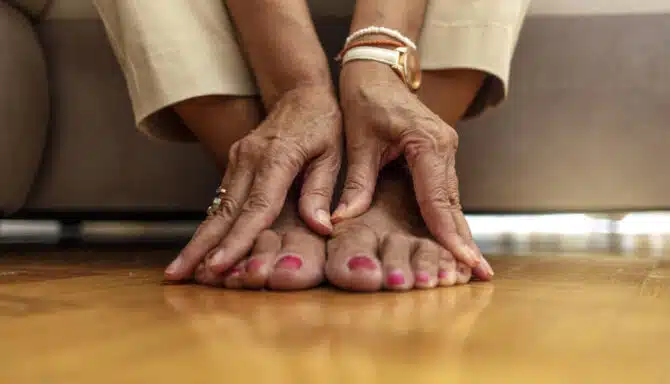Living in Canada, it’s critical to know the cold, hard truths of frostbite.
With an average Winter daily temperature of -1.5 C to – 9 C, Toronto winters are much more temperate than many other parts of Canada – like the prairies, eastern and northern Ontario and northern provinces and territories – which reduces the risk of frostbite.
Given Toronto‘s proximity to Lake Ontario and the lake effect, winter conditions can vary greatly. Being ill-prepared can put you at greater risk. In any event, look out for winter weather warnings for advanced notice of any incoming cold fronts or an Alberta clipper.
If you travel outside of the GTA, especially to the east or north, be aware of different climates throughout Ontario. For example, travelling to Ottawa means temperatures 5-10 C colder than Toronto at times, so wearing footwear that protects against both the cold and moisture are crucial.
Let’s get an overview, preventative measures, do’s and don’ts, and treatment for frostbite.
What is frostbite?

Frostbite is an injury caused by the freezing of the skin and underlying tissues. First, your skin becomes very cold and red, then numb, hard and pale. This skin condition is most common on the fingers, toes, nose, ears, cheeks and chin. For the purpose of this article, we’ll be focusing on the toes.
Typically, exposed skin is the most prone, especially in cold, windy conditions, but our feet are not often exposed directly to the elements (unlike hands, nose, and ears). For that reason, frostbite in your toes is more likely due to inadequate footwear, socks, or prolonged exposure outside.
Depending on the temperature you may develop frostbite as quickly as within 15 minutes of exposure to several hours.
What are the 3 stages of frostbite?
You don’t all of a sudden go from normal skin to frostbite. There are intermediate stages of frostbite, all with differing levels of severity.
On the one end, you have normal skin, which is at regular room temperature. On the far end, you have deep frostbite, which is the most serious form. The stages are below:
1. Frostnip
Frostnip is a milder form of cold injury that doesn’t cause permanent skin damage. You can treat frostnip with first-aid measures, including rewarming the affected skin. All other frostbite requires medical attention because it can damage skin, tissues, muscle and bones. Possible complications include infection and nerve damage
2. Superficial frostbite
With superficial frostbite, your skin feels warm, a sign of serious skin involvement. A fluid-filled Blister may appear 24 to 36 hours after rewarming the skin.
3. Deep frostbite
With deep frostbite, you may experience Numbness. Joints or muscles may no longer work. Large blisters form 24 to 48 hours after rewarming. Afterwards, the area turns black and hard as the tissue dies.
Does frostbite heal?
Frostnip
Frostnip can be treated with simple first-aid measures that include preventing further exposure to cold and rewarming.
Rewarming can be accomplished by soaking the affected area in warm (not hot) water for 15 to 30 minutes. Rewarming using heat sources such as stoves or heating pads should be avoided, as these can lead to burns.
As your skin begins to warm up, you may feel some pain or tingling. You can take over-the-counter pain medication such as ibuprofen to ease any discomfort.
Superficial frostbite
Many people can recover fully from superficial frostbite. New skin will form under any blisters or scabs. However, some people may have permanent problems that can include pain or numbness in the area.
Deep frostbite
As with some cases of superficial frostbite, people that have had deep frostbite may have lasting problems that can include pain or numbness as well as increased sensitivity to cold in the area.
How long does frostbite last?
In milder cases, frostnip can go away shortly (hours) after the area is rewarmed. In more severe cases, the effects can last for weeks, if not permanently. Skin is also more susceptible to the cold in subsequent exposures to the elements.
What about chilblains?
Chilblains is a common cold weather condition that is similar in ways to frostnip. Unlike frostnip/frostbite, chilblains occur with chronic cold temperatures and in the presence of moisture. It’s characterized by slight swelling of the toes and redness as the condition is the painful inflammation of small blood vessels. Whereas frostbite/frostnip is often caused by a single bout of cold exposure, chilblains is the repeated exposure to colder (but not freezing) temperatures.
Chilblains usually clear up within one to three weeks, especially if the weather gets warmer
What should you not do when you have frostbite?
- Don’t rub the affected skin with snow or anything else.
- Don’t walk on frostbitten feet or toes.
- Don’t stay outside. Get out of the cold.
- Don’t stay in wet clothes. Once inside, shed layers, and wrap yourself in a warm blanket.
- Don’t rewarm the skin with direct heat, such as a stove, heat lamp, fireplace or heating pad. This can cause burns. Gently warm the area instead to avoid rapid temperature change.
- Don’t underestimate the effects of damaged skin. When in doubt, contact a medical professional.
See how we can help!
Prepare for winter with products from Feet First Clinic, Toronto’s leading foot clinic. Whether mild or severe, you can rest easy knowing we’re able and happy to solve all your foot care needs. Call us at 416-769-3338 or Book Your Assessment Today!












